Introduction
In the landscape of business strategy, SWOT analysis stands as a cornerstone for evaluating the internal and external factors that can shape organizational growth. Opportunities, as one of its central pillars, represent the external chances for a company to enhance its performance.
This article will explore the importance of identifying opportunities in SWOT analysis, provide practical examples of leveraging them, discuss brainstorming and prioritizing techniques, and explain how to create an action plan to capitalize on these opportunities. Additionally, it will delve into integrating SWOT analysis into marketing strategy and highlight best practices for conducting a comprehensive SWOT analysis. By applying these insights, CFOs can equip themselves with the necessary tools to embrace and leverage opportunities, ensuring their strategies remain aligned with both short and long-term objectives in a rapidly evolving marketplace.
Understanding SWOT Analysis Components
In the landscape of business strategy, SWOT analysis stands as a cornerstone for evaluating the internal and external factors that can shape organizational growth. Opportunities, as one of its central pillars, represent the external chances for a company to enhance its performance.
These could manifest as emerging market trends, policy changes that open up new business avenues, or technological advancements that a firm can harness before its competitors. Understanding these opportunities enables a company to position itself advantageously in the marketplace, ready to capitalize on positive shifts in the environment. A robust SWOT analysis illuminates the path forward, equipping decision-makers with the insights needed to pivot and adapt strategies effectively, ensuring that they remain aligned with both short and long-term objectives.
Identifying Opportunities in SWOT Analysis
When conducting a SWOT analysis to pinpoint opportunities, one must venture beyond the company's walls to examine external environmental factors. This includes market dynamics, consumer behaviors, technological shifts, and strategic moves from competitors.
Analyzing these factors can illuminate pathways to harness market trends, which can be used to sharpen competitive edges. Take the example of Stora Enso, an ancient Finnish paper manufacturer who refashioned itself into a renewable materials company.
This strategic pivot was the result of recognizing dwindling paper demand due to digital media surge—consumer electronics, particularly mobile devices, have drastically changed market landscapes. The technical analysis of markets underlined how innovative materials, such as sustainable alternatives to plastic drinkware, could meet burgeoning consumer needs. Stora Enso's transformation showcases a profound SWOT application—it leveraged its historical industry strength to explore opportunities that aligned with environmental prospects and consumer trends, leading to new avenues for growth. Hence, pinpointing opportunities in SWOT involves not just internal reflections, but also understanding the trajectory of external factors and strategically positioning to harness their potential.
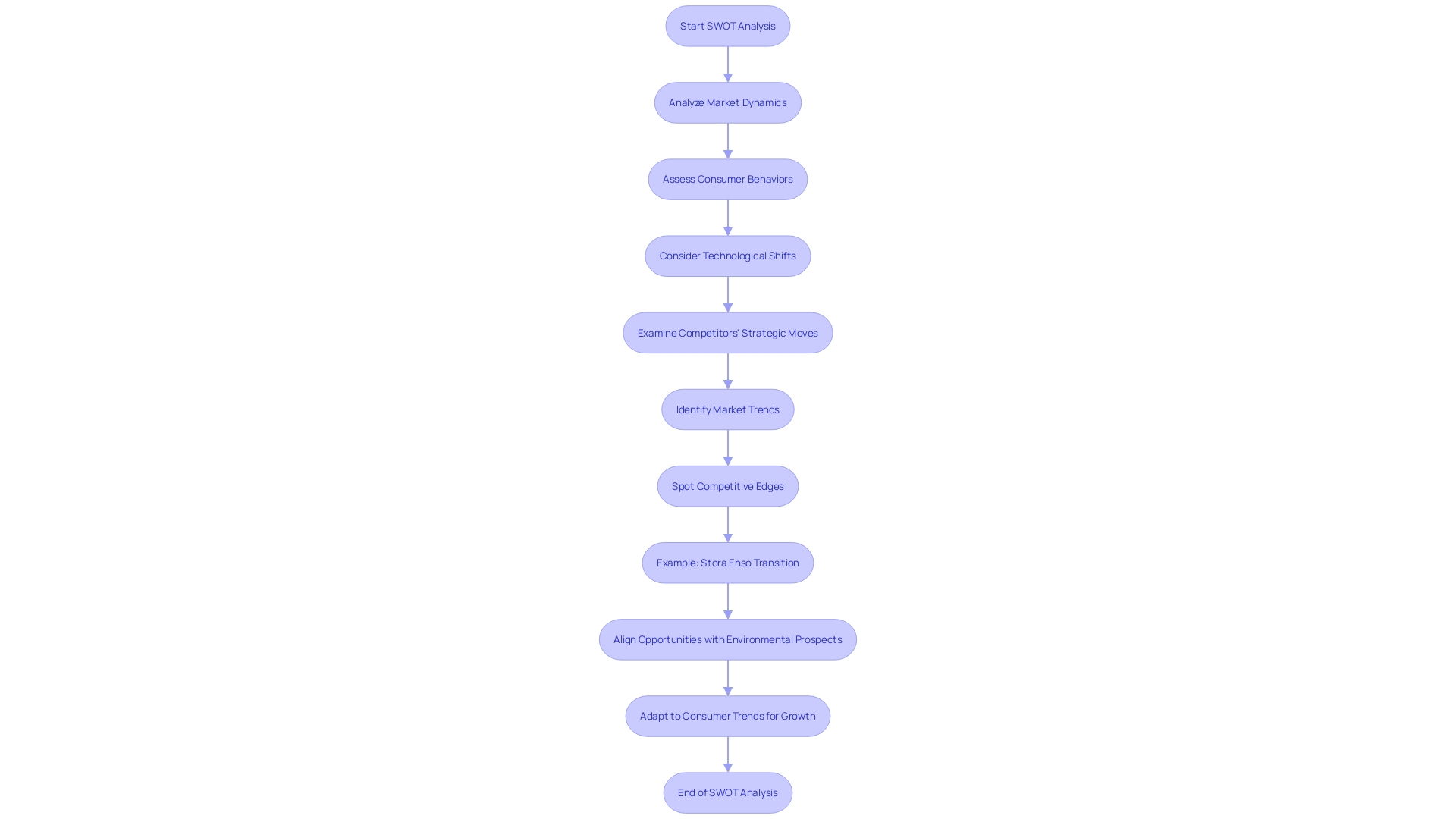
Practical Examples of Leveraging Opportunities
SWOT analysis, an accomplished strategic planning framework, offers a comprehensive view to seize opportunities within your organization's operational sphere. To leverage opportunities effectively:
1.
Market Expansion: Proactively explore new territories or niche customer bases in need of your unique offerings, harnessing your organization’s recognized strengths to stand out in an expanded marketplace. 2.
Strategic Partnerships: Forge alliances with players whose business complements your own, utilizing your firm’s robust financial health or cutting-edge technology to mutual advantage, accessing broader markets while showcasing your core competencies. 3.
Product Development: Capitalize on emerging consumer trends or unserved needs by innovating and crafting novel products or services, ensuring they resonate with what your company excels at. 4.
Competitive Pricing: Sharpen your pricing tactics, ensuring they align with the market while maintaining your organization's profitability. This move should also reflect your business's internal capabilities, such as cost structure and operational efficiency. 5. Marketing and Promotions: Deploy strategic marketing and promotional campaigns that leverage your firm’s existing strengths to bolster brand awareness, generate quality leads, and propel sales forward. By concentrating on actionable opportunities that dovetail with your organization's strategic objectives and inherent strengths, your business can not only navigate but also thrive amidst the complexities of its external environment.
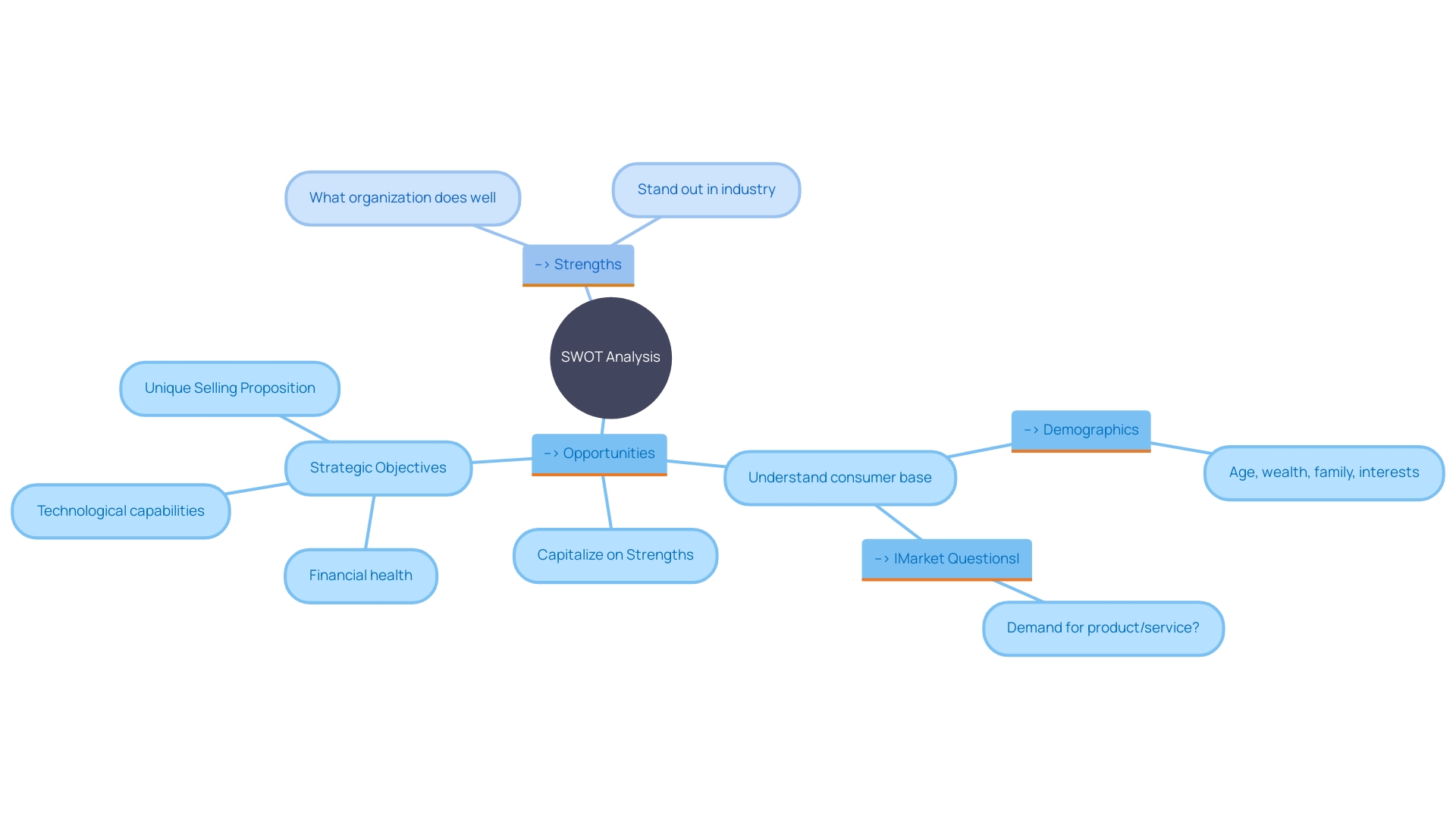
Brainstorming and Prioritizing Opportunities
Harnessing the power of SWOT analysis, organizations embark on a strategic journey to pinpoint their distinctive advantages, pinpoint areas of improvement, identify new pathways for growth, and recognize potential threats. This process is pivotal in carving a successful trajectory for the business. Embracing this strategic tool begins by convening a cross-functional team that represents a spectrum of insights—tapping into the collective expertise from various departments.
Rich, diverse perspectives are not just beneficial; they're essential to adequately scanning the environment from all angles. The brainstorming phase is more than just tossing ideas around; it's a quest for uncovering golden opportunities that might be rooted in customer insight, unique market trends, or the company's own arsenal of strengths. Encouraging out-of-the-box thinking, this stage thrives on diversity and creativity.
The crucial part of this exercise lies in the meticulous examination and ranking of these opportunities. Each one is held against a rigorous standard, evaluating its potential market reach, resource implications, and strategic fit. Prioritization becomes the name of the game, filtering through the feasibility lens to ensure the chosen opportunities are both attainable and significantly beneficial for the company.
Decisions born out of a SWOT analysis are fortified by robust discussions and a wide-ranging assessment of the company's standing in the competitive landscape. From assessing financial fortitude to technology prowess, strengths serve as the building blocks of strategy—fueling initiatives that harness these core competencies. This attentive scrutiny sets the stage for a future-proof strategy, laying down a roadmap that not only embodies where the business excels but also seamlessly navigates its trajectory forward.
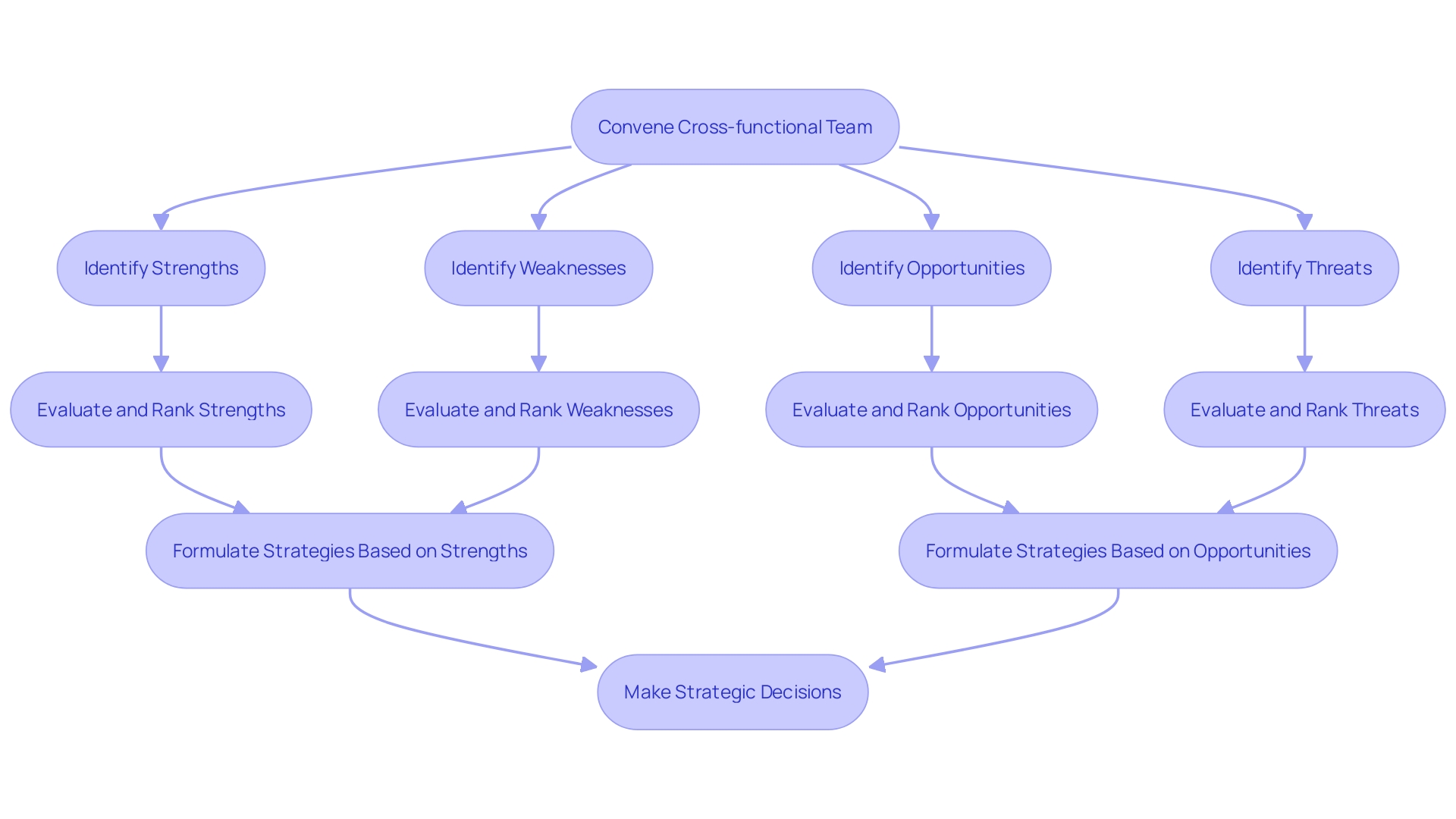
Creating an Action Plan for Opportunities
To transform opportunities into tangible results, a meticulously structured action plan serves as the linchpin. An action plan is akin to a roadmap, as it delineates a systematic strategy to transition from the present scenario to the envisioned objectives.
It must be comprehensive, encompassing clear goals, designated responsibilities, well-defined timelines, resource allocation, and regular progress reviews. Creating an action plan begins with defining specific objectives that dovetail with the overarching business strategy.
For instance, a project management team aiming to improve efficiency might focus on KPIs such as completion rates, adherence to timelines, and client satisfaction. The next step involves breaking these objectives into actionable tasks, pinpointing resource requirements, and assigning distinct responsibilities, ensuring each team member knows their role.
Timelines are critical; they must be practical, accounting for dependencies and resource availability, reminiscent of Spotify Audiobooks’ attention to actionability in data analysis. Resources need to be precisely allocated, whether they are financial, human, or technological, directly influencing the action plan’s viability. Monitoring progress is non-negotiable; it ensures that the plan remains on track and allows for swift adaptions to any shifts or unexpected challenges, aligning with the action plan's intrinsic flexibility to cater to various domains such as business and healthcare. Ultimately, the right action plan, executed effectively, converts strategic goals into measurable successes, demonstrating how a structured approach to opportunity can yield substantial improvements in performance and outcomes.
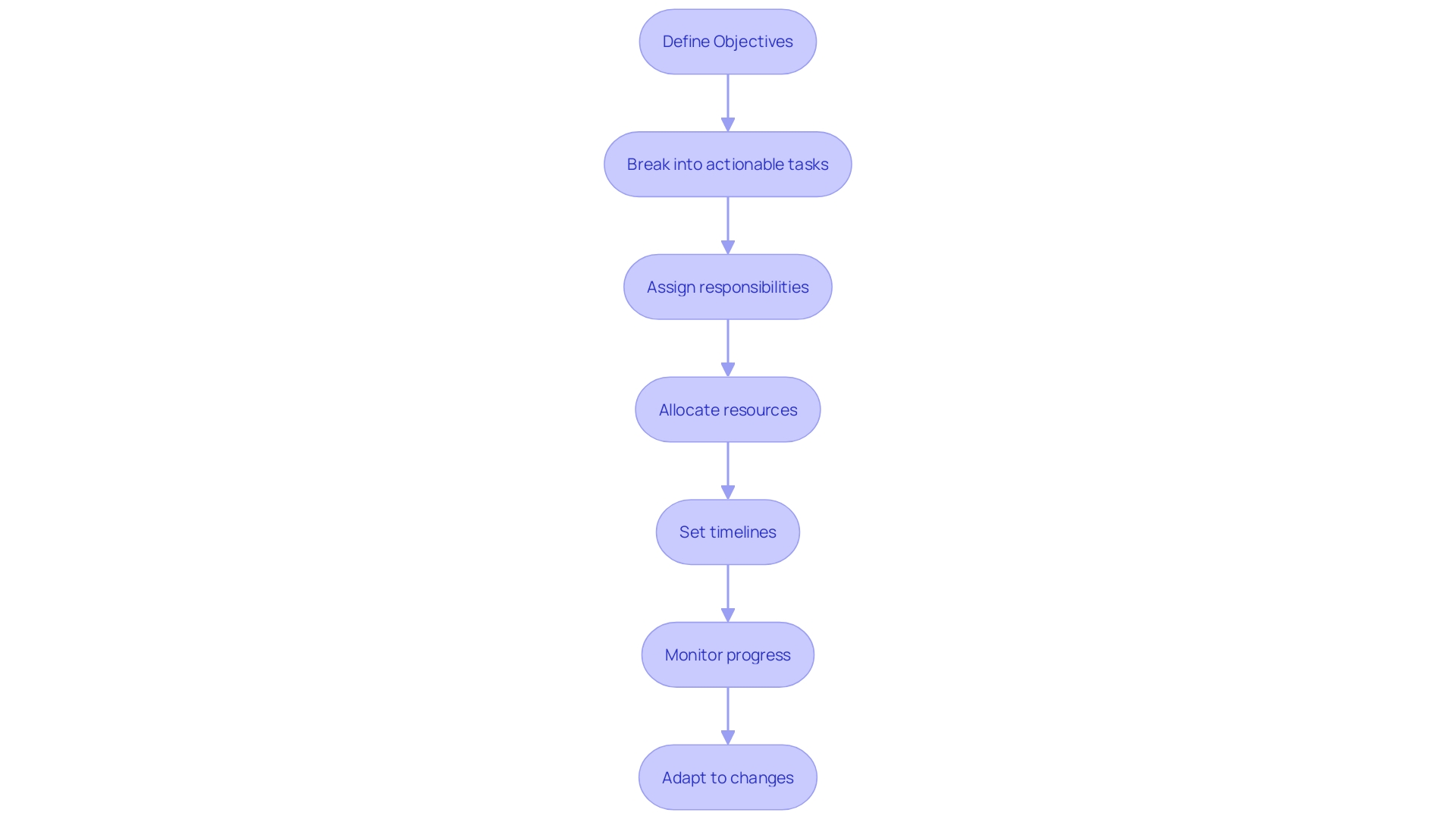
Integrating SWOT Analysis into Marketing Strategy
Implementing a SWOT analysis into a marketing strategy begins with aligning your organization's strengths to the opportunities at hand. Develop compelling marketing messages that showcase your unique value propositions, directly addressing the needs and demands within your industry landscape.
Identify the specific segments of your target audience that resonate most with these opportunities and tailor your approach to engage these groups more intensely. Decide on the optimal marketing channels—be they digital, traditional, or a mix—that offer the highest potential for customer engagement and conversion.
In a competitive market, differentiation is the key. Analyze the opportunities unearthed from your SWOT analysis to position your company distinctively against competitors.
Highlight how your strengths, such as superior technology, dedicated personnel, or financial robustness, empower you to meet the market's needs in ways others cannot. Maintaining a dynamic marketing strategy is critical; persistently track and analyze the outcomes of your efforts. Monitor market shifts, gather consumer feedback, and stay informed of industry changes to refine your approach. The ability to consistently evaluate and swiftly adjust in response to the evolving business environment is a significant competitive advantage gleaned from a well-executed SWOT analysis. By employing this strategic tool, not only do you optimize the impact of your current marketing initiatives, but also lay a solid foundation for sustainable growth and resilience in your organization.
Best Practices for Conducting a SWOT Analysis
To fully leverage a SWOT analysis, it is essential to gather a team with a variety of perspectives, encompassing different departments and hierarchies within your organization. The aim is to obtain a holistic view of the business landscape and internal dynamics. Fact-based decision-making is at the heart of SWOT, with a reliance on current market data, consumer behavior analytics, and an understanding of industry developments.
Embrace a culture of candor during this process; acknowledging weaknesses and threats is as critical as recognizing your strengths and opportunities. Such honesty ensures strategies are built on a realistic appraisal of the business. An organization's longevity hinges on its ability to evolve; hence, SWOT should not be a one-off event but a periodic ritual to help navigate the fluid business environment.
As pointed out in industry discussions, the SWOT framework guides businesses in marshaling resources to fortify areas of strength and remedy areas of weakness, mapping out a proactive approach to burgeoning opportunities and emerging threats. To catalyze ideas into initiatives, it's vital to translate the outcomes of your SWOT analysis into implementation plans. This means taking the insights gained about market positioning, financial health, and technological edge – elements that underscore your business’s strengths – and molding them into tangible strategies.
Historical and contemporary cases, such as the story of Kodak, which pioneered the digital camera, underscore the importance of using SWOT insights to adapt. Such cases exemplify the need for organizations to continually challenge their status quo, even when they are market leaders, to avoid obsolescence and maintain relevance in a changing world. Through effective application of SWOT, learnings should become the foundation for strategies that not only address the current state of the business but also chart a course for future trajectories – reaffirming the organization's competitive edge and securing a robust market stance.
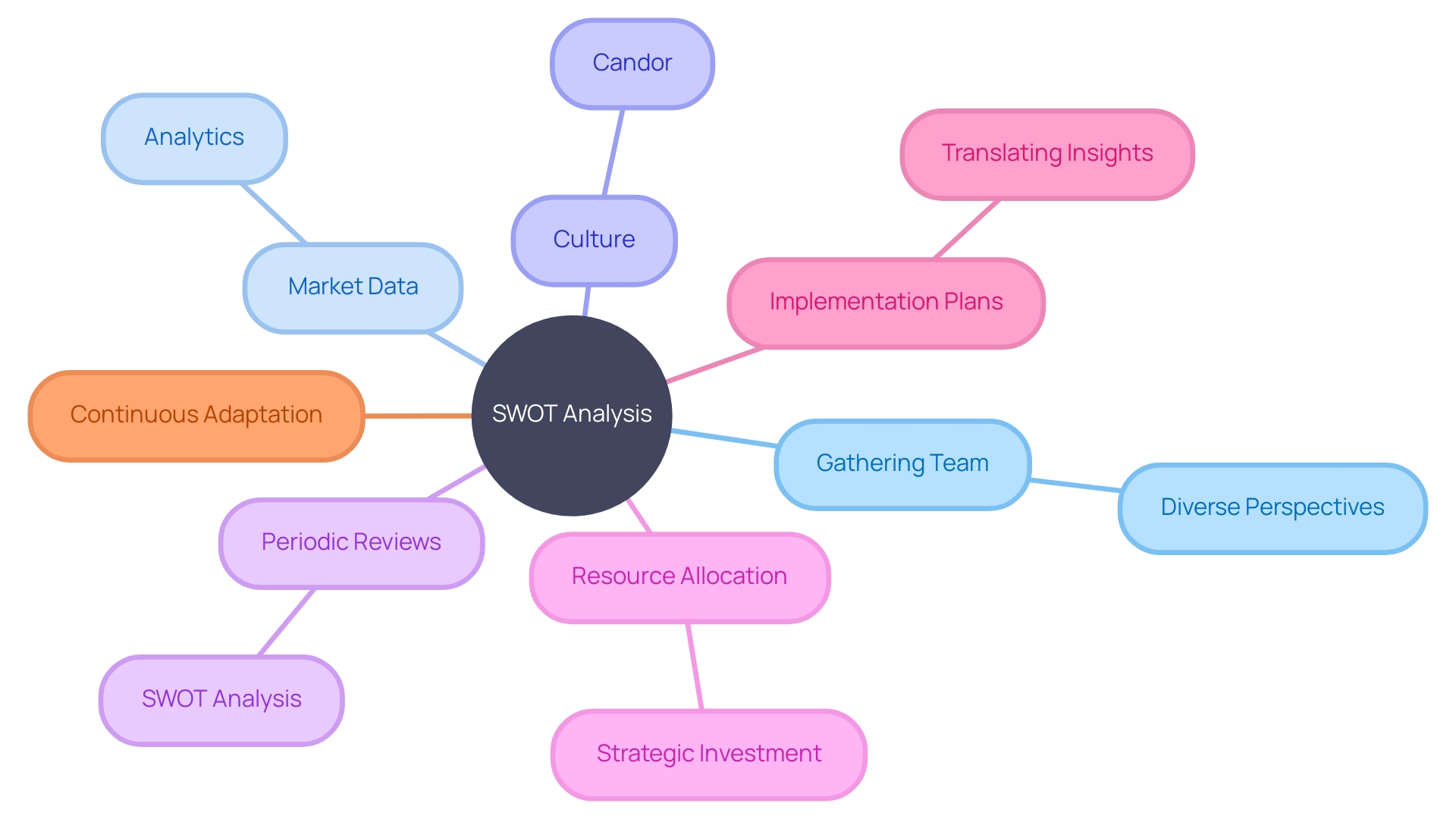
Conclusion
In conclusion, SWOT analysis is a powerful tool for CFOs to evaluate internal and external factors that shape organizational growth. By identifying opportunities and leveraging them effectively, companies can position themselves advantageously in the marketplace and capitalize on positive shifts in the environment.
Practical examples of leveraging opportunities include market expansion, strategic partnerships, product development, competitive pricing, and strategic marketing. By focusing on actionable opportunities that align with the organization's objectives and strengths, businesses can thrive in a complex and competitive landscape.
Brainstorming and prioritizing opportunities are crucial steps in the SWOT analysis process. By convening a diverse team and filtering opportunities through a feasibility lens, companies ensure strategic alignment and maximize their potential for success.
Creating an actionable plan is essential for transforming opportunities into tangible results. This plan should have clear goals, designated responsibilities, realistic timelines, and proper resource allocation.
Regular progress monitoring allows for adjustments and ensures the plan stays on track. Integrating SWOT analysis into marketing strategy involves aligning strengths with identified opportunities. By developing compelling marketing messages and tailoring approaches to specific target audience segments, companies can differentiate themselves and gain a competitive edge. To conduct a successful SWOT analysis, CFOs should gather a diverse team, rely on current market data, foster a culture of honesty and openness, and make it an ongoing practice. Translating SWOT insights into implementation plans ensures that strategies address the present state of the business while paving the way for future growth and resilience. By embracing the power of SWOT analysis and leveraging opportunities, CFOs can equip themselves with the necessary tools to navigate a rapidly evolving marketplace, drive organizational growth, and secure a strong market position for their companies.




